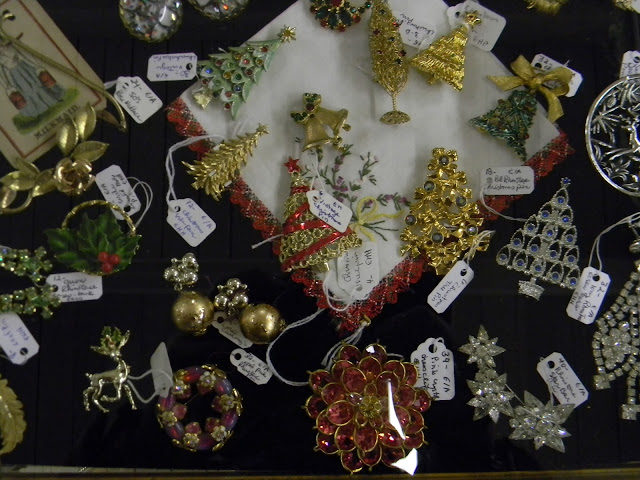Nestled in the back of this antique mall, the Home on the Range room features cowboy boots and western ware to suit every cowboy, cowgirl, cowkid or even a trendy city slicker.
There are boots in all sizes, shapes and colors, some vintage, some new.
There are western shirts, fringe jackets, Indian blankets...
Boots for little boys and girls...
And even something for a Rhinestone Cowgirl...
No one really knows who the original inventor of cowboy
boots was. According to several different stories and legends, the first pair
of cowboy boots was made by either a shoemaker in Kansas, or by one in Texas.
After the Civil War was over in 1865,
the cowboys who were driving cattle across the country discovered that they
needed a different style of boot. The ones worn during the war just didn’t
suit the long hours riding on the trails: blazing through the brush and
brambles, splashing through creeks and rivers, and riding with their feet in
stirrups for hours at a time.
Around 1870 some ingenious cowboy took his boots
to a shoemaker and asked for a pointy toe so he could get his foot into the
stirrup more easily; a taller shaft to protect his legs; and a bigger, thicker,
under slung heal so his foot wouldn’t come out of the stirrup during the rough
riding on the trails.
And so it began. The knee-high design protected his legs from the thorns
of mesquite trees, barbed wire, snakes, and other dangers. The cowboy boots
were pulled on with long mule-ear straps but were loose enough on the top so
that they could be wiggled out of easily if the cowboy was hung up in the
stirrup and needed to get out in a hurry.
The tough leather that the cowboy
boots were made from also protected the cowboy’s ankles from being bruised by
the wooden stirrups, and his legs from rubbing against the stirrup leathers.
The cowboy boots were stitched on the outside to keep the leather from buckling
and eventually rubbing against the cowboy’s leg.
After my visit to the Home on the Range room at the Camden Merchant's Showcase, this cowgirl-boot junkie purchase these turquoise beauties to add to my boot collection. Giddy-up!
History of the boot courtesy of www.cowboyboots.com

















































